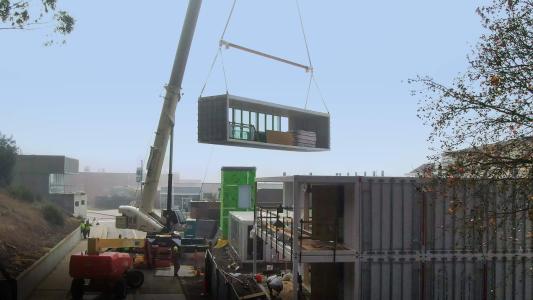America is in desperate need of more affordable housing. The burden of rent has been rising for decades, especially for low-income families, and data shows that homelessness soars as housing costs become unaffordable.
To address the shortfall, some places are looking to a housing model of the past: the boarding house.
What’s a boarding house? A boarding house is like a cross between a single family home and a hotel. The bedrooms in the house are rentable — usually by the night, week, or month — while the kitchen, bathrooms, and common areas are shared by all the tenants.
The owner of the boarding house often lives in it, too, and may provide renters with meals or laundry services.
A room in a boarding house typically costs far less to rent than a full-size apartment or house, and tenants don’t have to commit to long leases. The communal aspect also provides boarders with a built-in social network, which can be appealing to someone who just moved to a city.
The rise and fall (and rise?): For those reasons and more, boarding houses used to be incredibly popular in the United States — in the 1800s, between a third and half of the nation’s city-dwellers either lived in a boarding house or owned one at some point in their lives.
That changed around the mid-1900s, though, when an increase in incomes and suburban housing options prompted many of the working class people who had occupied boarding houses to seek shelter elsewhere.
Lower-class people took their places, and communal living spaces became associated with urban decay. Cities then began implementing zoning laws that limited the number of unrelated people who could live in the same house, making most boarding houses illegal.
However, in response to the current housing crisis, some states are rethinking those laws — in May, both Washington and Oregon passed bills that increased the number of unrelated people allowed to live in a single home.
It might not take very much money at all to tap into these bedrooms.
Leon Porter
Why it matters: If the boarding house experiences a revival in the U.S., the impact could be huge.
Portland housing advocate Leon Porter estimates that there are 1.5 million bedrooms in Oregon alone that no one is sleeping in, either because the home is vacant or because it’s simply a guest room in an occupied house.
If just 1% of those rooms were rented out, every homeless person in the state could have a roof over their head — and homeowners might get some much-needed financial relief as well.
“It might not take very much money at all to tap into these bedrooms,” Porter told Sightline in February. “It might simply be a matter of paying for a screening process or maybe subsidizing the rents of these bedrooms a little bit.”
“What we can do is facilitate programs with people who are living in these really big houses,” he added, “who are lonely and are having trouble paying the mortgage and would like some roommates who have been pre-screened and are safe to live with.”
We’d love to hear from you! If you have a comment about this article or if you have a tip for a future Freethink story, please email us at [email protected].






